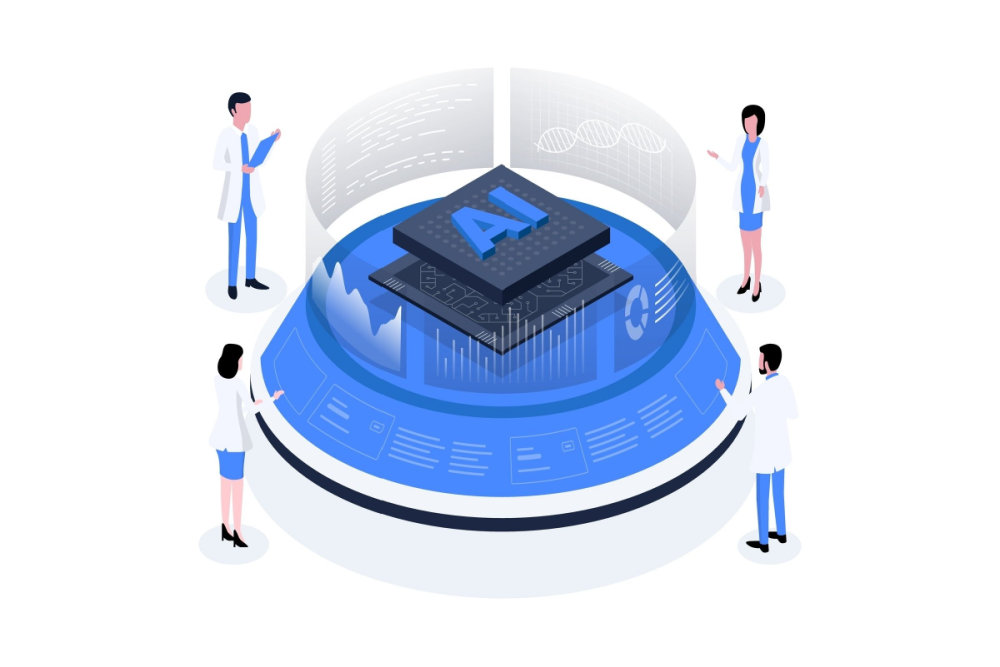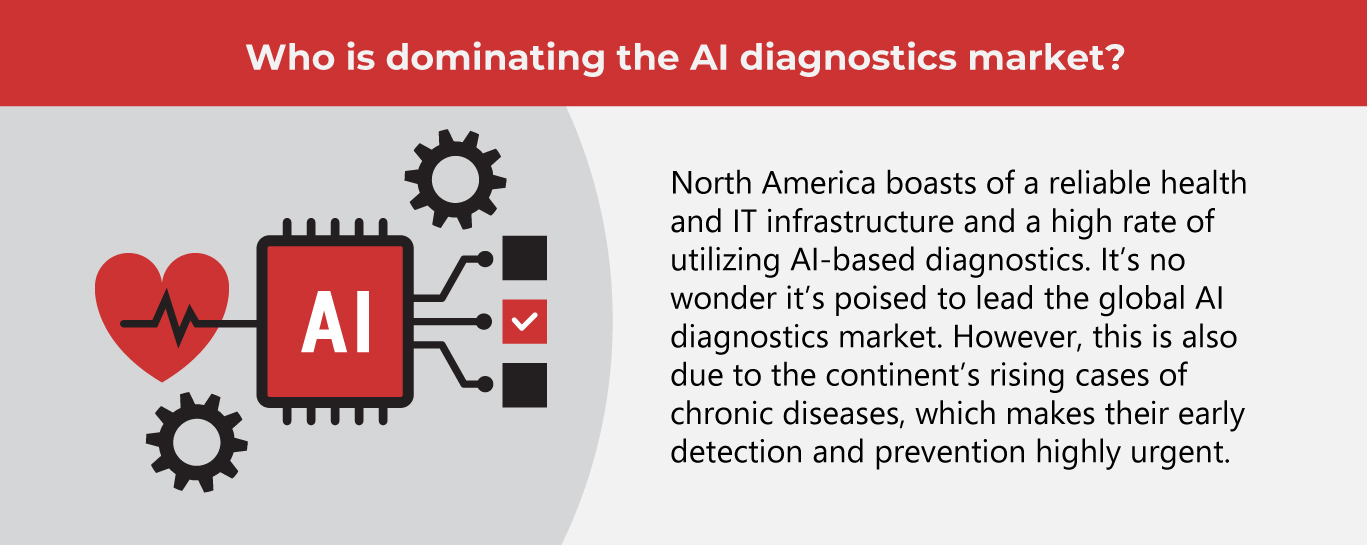How AI Can Help Save Lives

Various industries are leveraging the benefits of artificial intelligence (AI). Vehicle production gets a boost from this technology, making self-driving cars possible. In banking, AI automates detecting fraud, assessing risks, and catering to customers. Robotics also heavily rely on AI, allowing machines to complete sophisticated tasks precisely.

In the health industry, AI in the diagnostic market was pegged at over US$ 1 billion in 2022 and is predicted to rise to over US$ 7 billion in 2032. Why such rapid growth? Here are some reasons:
- An increase in chronic conditions
Chronic conditions, like heart disease, some cancer types, and diabetes, require consistent monitoring and medical management. To address the upsurge of such cases, AI can support healthcare professionals in conducting patient care and decision-making.
- Heightened awareness of AI
There is a rising demand for medical innovations that improve diagnostic accuracy. This has resulted in AI-infused software that harvests data from CT, MRI, and other patient information.
- Market competition
To ensure their competitiveness, the top companies in the AI diagnostics segment are developing new products and expanding their services. These companies enjoy support and investment opportunities because of the market’s optimistic growth.
- Government support
Governments worldwide are giving initiatives to boost AI use in their countries and communities. Some of these strategies include funding and grants, public-private partnerships, and skills development. With government assistance, AI adoption becomes faster and easier.

The use of AI in healthcare is proliferating, with its applications expanding to various areas. Find out some of its benefits embraced by the medical world.
- Early detection of diseases
Some chronic diseases can be prevented if they are detected early. With AI-fueled diagnostics, this is possible, helping health professionals formulate effective treatment options. This keeps the condition from worsening and reduces complications while boosting the chances of successful medical care.
The prevalence of neurological conditions like Alzheimer’s disease and brain tumors is also driving the diagnostics industry, highlighting the need for timely detection.
- Faster diagnosis
AI can continuously compute and analyze significant amounts of data, which expedites the diagnostic process. Because of this, triaging becomes more efficient, helping healthcare employees prioritize cases based on how acute or critical they are. This way, urgent issues can receive swift diagnosis and intervention.
Telemedicine platforms can utilize AI-based tools to provide initial evaluations and recommendations if patient mobility is an issue.
- Improved accuracy
AI can study medical data to ensure quality control to identify mistakes, contradictions, or missing details. AI can also prevent human error through extensive neural systems and sophisticated algorithms. Machine learning allows AI to adjust to specific settings and parameters over time, enabling it to make more precise analyses.
- Customized treatments
Because AI can assess vast amounts of health records and information, it can efficiently pinpoint patterns and data correlations. It can analyze different data, including blood exam results, vital signs, medical imaging, health history and many more, to provide a holistic view of the patient’s condition. Because of this in-depth evaluation, doctors can better customize treatments.
- Continuous monitoring
Monitoring is vital in preventing disease progression. Wearable devices, sensors, and electronic records ensure a constant data stream for assessment. AI can also allow real-time data, alerting patients and healthcare providers on prompt interventions. Telemedicine is more effective with AI, ensuring regular supervision beyond traditional consultations.
- Lighter workload for medical professionals
Radiologists, in particular, are burdened with volumes of X-rays and other medical images to interpret. Automating repetitive tasks like this frees up health professionals for high-level duties and patient care. According to the Macau University of Science and Technology (MUST), an experienced radiologist consumes at least 20 minutes to assess a CT scan of up to 400 images. Meanwhile, AI can complete a reading in only 20 seconds.
- Enhanced partnership between humans and AI
While AI provides data precision, medical practitioners offer empathy and human interaction–crucial elements in patient recovery. However, some health professionals worry about patients preferring technology over in-person treatments. This has the potential to jeopardize established parent-doctor relationships.
- Halting epidemics and pandemics
With swift diagnostics comes timely interventions, slowing down the spread of disease. In 2020, MUST Professor Kang Zang and his team developed an AI system to diagnose COVID-19 pneumonia from imaging. It showed that the system could differentiate COVID-19 from other pneumonia types in just 20 seconds, with over 90% accuracy.

Though AI holds many potential benefits for health diagnostics, it still needs to overcome these obstacles to be impactful.
- Fragmented and low-quality data
AI algorithms need vast amounts of data that are organized and complete. This can pose a challenge in the health industry, which uses numerous data sources which may not be standardized, resulting in inconsistencies. There is also a lack of data entry protocols. Different health establishments store medical records with no coordination, causing data fragmentation.
- Data privacy
Why is it challenging to integrate medical data? Stringent privacy measures can impede the sharing and fusion of information from various sources, failing to give a big-picture view. The use of AI also poses concerns, such as ethical algorithmic processes. While developers are working to address these issues, AI systems need more testing to prove their worth in clinical research.
- Software compatibility
Companies are joining the race to create AI-powered tools that will be the next big thing in diagnostics. But a lack of standardization and frameworks may prevent a synergy of these technologies, which leads to inaccurate information and delayed diagnosis.
- Budget constraints
Because AI development needs extensive capital, emerging countries may be left behind in diagnostics, yielding poor health outcomes for specific populations. Medical equipment and software licenses may be costly, making it challenging for some centers to obtain them. This hinders the widespread adoption of innovative systems.
With these in mind, developers should produce technologies that ensure that the majority benefits from AI tools, which are robust, resilient and impeccable.

As one of the Top 19 EMS companies in the world, IMI has over 40 years of experience in providing electronics manufacturing and technology solutions.
We are ready to support your business on a global scale.
Our proven technical expertise, worldwide reach, and vast experience in high-growth and emerging markets make us the ideal global manufacturing solutions partner.
Let's work together to build our future today.
Other Blog




